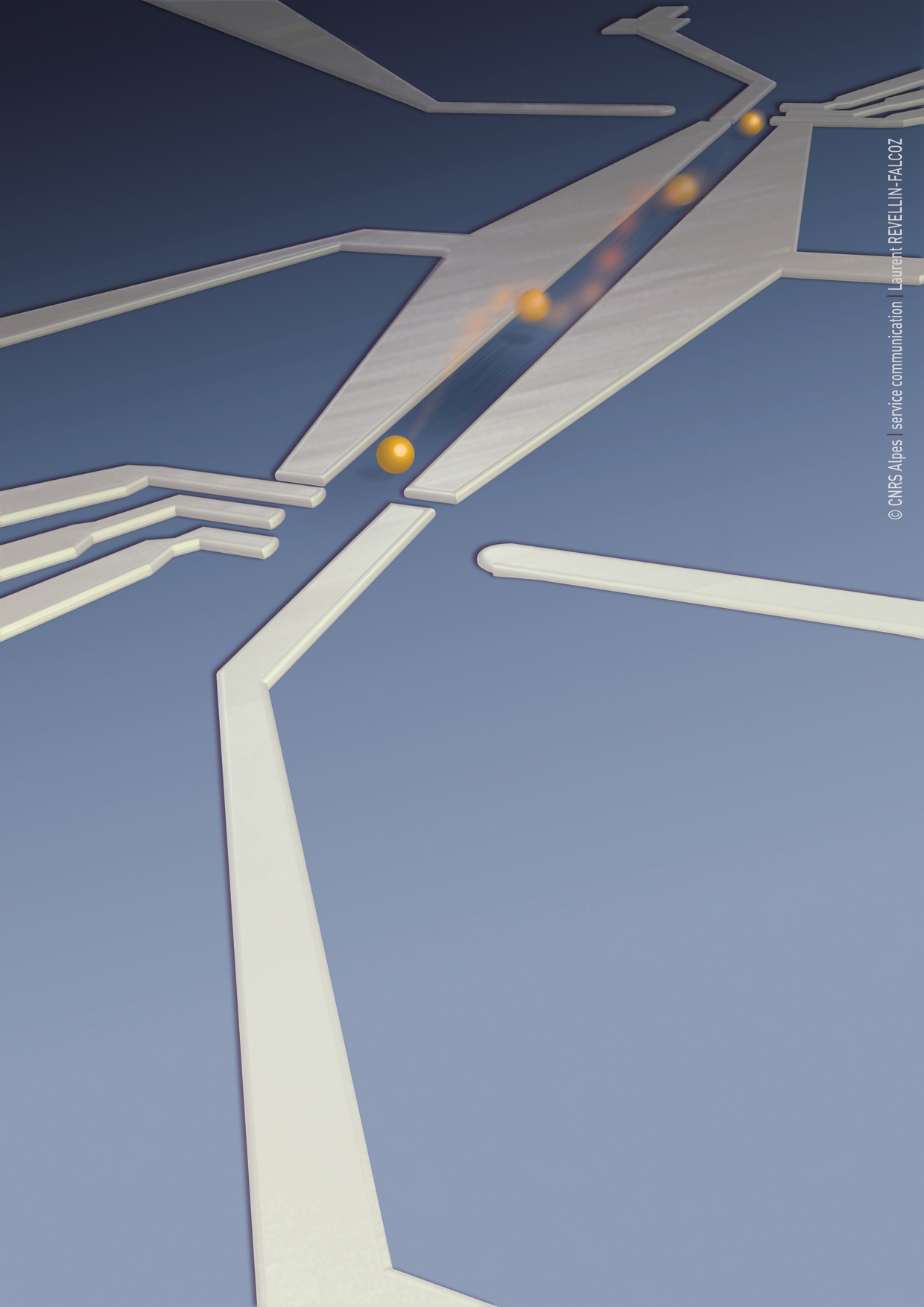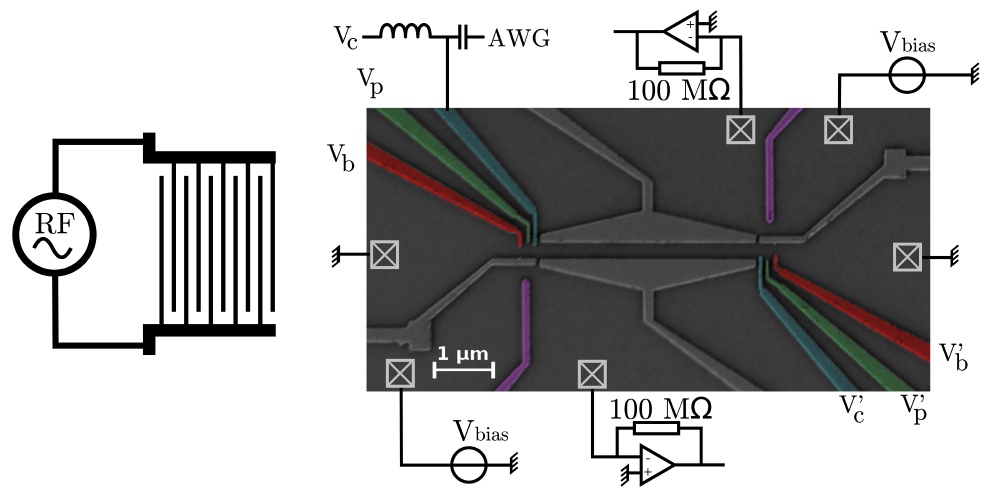Physicists have succeeded in taking a decisive step towards the development of more powerful computers; they were able to define two little quantum dots (QDs), occupied with electrons, in a semiconductor and to select a single electron from one of them using a sound wave, and then to transport it to the neighboring QD.
A single electron “surfs” thus from one quantum dot to the next like a fish on a wave. This manipulation of a single electron will also enable the combination of considerably more complex quantum bits instead of classical bits (“0” and “1” states).
Electrons can move freely in electric conductors (metals) and semiconductors such as silicon (Si) or gallium arsenide (GaAs), owing to differences in voltage. Inside a metal, they are present as a huge number of fish that fill nearly the entire volume of water. The electrons can be concentrated in a thin layer near the surface by the application of an external voltage and so can be easily accessible.
Fishing one from the quantum dot
Prof. Andreas Wieck, physicist at Ruhr University Bochum says their method enables the “emission” of individual electrons from the QD, moving them over a specific distance and then detecting them at the neighboring QD. A distance of four micrometers (μm) was used in the experiment – this is twenty times larger than a highly integrated transistor.
Targeted transport of individual electrons is possible in the following way: First, a QD is defined between the tips of four electrodes to form this zero-dimensional object, containing some hundred electrons. The scientists subsequently send a sound wave along the semiconductor surface using interdigital (like two combs fitted together without touching each other) electrodes to which they apply a radio frequency voltage. This method functions in the opposite way as the electrical discharge of a piezo ignition system in which a crystal is deformed to attain a voltage. The researchers applied voltage to the crystal and thus deform it, and the alternating voltage leads to the formation of a sound wave.

The electrons are yellow; the waves in the crystal are presented in red
In a sample, this wave moves, for example, from left to right through the quantum dot at the velocity of sound – inside the crystal at three kilometers per second. Its height is adjusted so that it extracts exactly one “fish” from it. The latter subsequently surfs on the wave in a one-dimensional channel. The “fish” arrives at the neighboring quantum dot 4 μm to the right thereof. The researchers were able to attain good statistics by repetition of the waves and measurements and thus capable of determining the reliability of the method. During the first experiments, the probability of emission and detection of a single electron with the wave was 96 and 92%, respectively.
It is not possible to differentiate between the electrons “fish”, but they can be differently aligned because they rotate like little spinning tops. This is called the “spin” of the electron. For example one can align a fish with “its head upwards,” let it be transported with the wave, and then detect it again at the target quantum dot still having “its head upwards.” The time for the spin to change is longer than the surfing time on the wave, so the probability of this occurring is very high. 
Schematic overview of the experimental design with an electron microscope diagram of a sample prepared by molecular beam epitaxy at the Ruhr University Bochum, structured in Tokyo and measured in Grenoble
The quantum bits of the future will also consist of such spin-polarized electrons. The researchers attained their results with samples prepared by so-called molecular beam epitaxy at the chair of Applied Solid State Physics at the Ruhr University Bochum. They were structured in Tokyo and subsequently measured in Grenoble. But not only the samples, also a further development of this concept originates from Bochum: Prof. Wieck already published his vision of an electron directional coupler with two parallel one-dimensional channels, in which the electrons can skip from one to the other channel, 21 years ago. The research team has in the meantime realized this vision based on the results presented here. A further publication is therefore to follow shortly.
Citation: Sylvain Hermelin, Shintaro Takada, Michihisa Yamamoto, Seigo Tarucha, Andreas D. Wieck, Laurent Saminadayar, Christopher Bäuerle and Tristan Meunier: Electrons surfing on a sound wave as a platform for quantum optics with flying electrons. DOI: 10.1038/nature10416





Comments